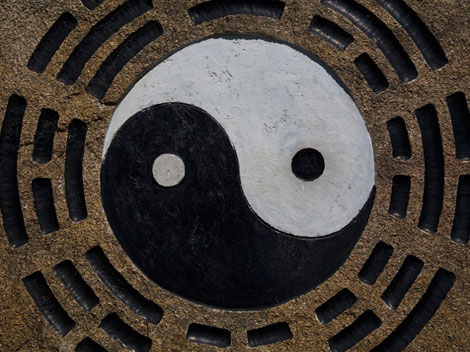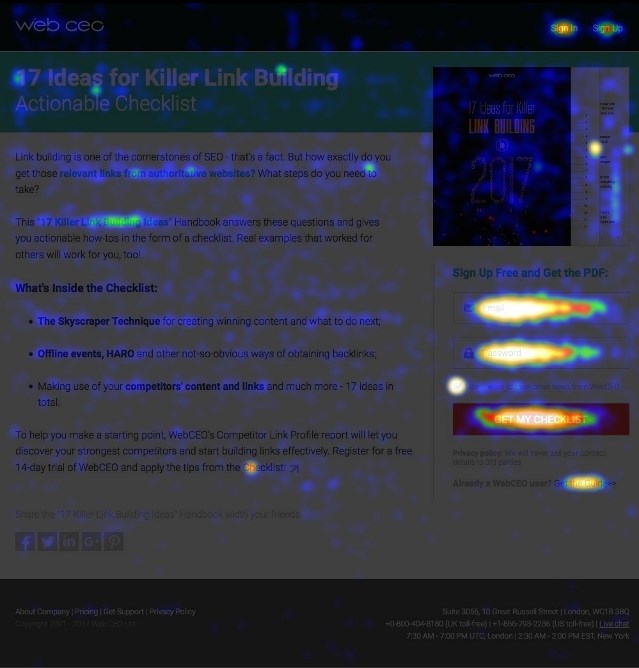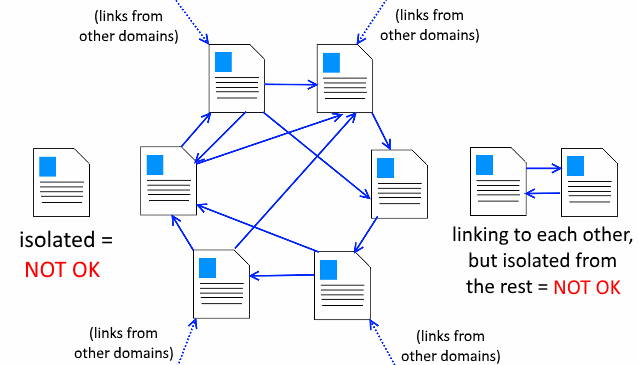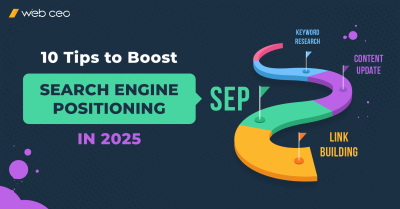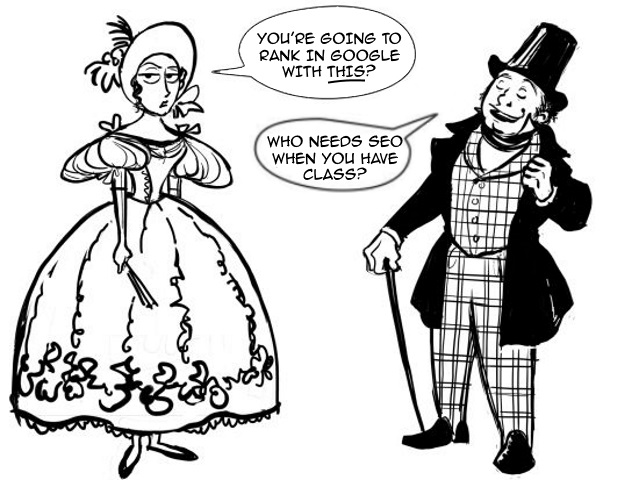
Fashion websites, whether they are online stores or just blogs, need SEO just like the rest of them. After all, there’s no better way to reach the top positions in search engines and stay there as of yet. But can you go about optimizing a fashion site like you do with any other random domain? Your sense of cautiousness probably tells you it’s not that simple, and that’s totally right. Fashion SEO has its own special traits you won’t have to deal with while optimizing sites from other niches. Miss out on them, and you will risk wasting all of your efforts!
So how about looking into those special traits that are characteristic to SEO for fashion websites and clothing brands? I’m as curious as you are. Read on.
1. Research keywords with trends in mind
One of the most basic SEO principles: use long-tail keywords before short-tails. There’s less competition for them, they reflect the intent behind the search more clearly, and they are more likely to result in a sale. A keyword like “men’s jacket” is unlikely to get you on Google’s first page; other websites are already ranking high for it. On the other hand, “men’s black leather jacket with hood” will be of much greater help to you.
So it’s as simple as using long-tail keywords for a fashion website, right? Pick them in WebCEO’s Keyword Suggestions, and you’re guaranteed to win?
Not so fast.
There’s another basic rule of SEO: “get with the times”. Content on your site must be fresh and up-to-date, or else nobody is going to be interested in it (history lovers don’t count, that’s your business). This is especially true for fashion where it’s all about what is currently trending. Nothing in fashion lasts forever: trends come and go, and that must be reflected in your business strategy. Which includes both marketing and SEO.
This means that long-tail keywords alone aren’t going to cut it. They have to be long-tail keywords that are trending right now – or will be trending soon. Google Trends displays a trend’s success in the form of a graph, and certain social platforms like Pinterest are also good for keeping an eye on what’s going on in fashion. Use them to predict which keywords will bring you traffic, and which don’t deserve your attention… until seasons change, maybe.
2. Be generous with images and optimize them
The fashion industry relies on imagery more heavily than any other. So does SEO for clothing brands. Present yourself with style, dazzle the eyes all around you, stun and stagger the crowd! This is the difference between fashionable clothes and everyday outfits. It is said “clothes make the man” – and they can make a website, too.
Use images that are just as stunning as what you sell!
Naturally, images take a toll on a website’s loading speed. The more content on a page, the longer it takes to load; and the longer it takes to load, the fewer customers you’ll have. You can’t avoid having images on a fashion blog or an ecommerce site. But you can (and should) do everything in your power to reduce the burden they put on it.
How to optimize images on your site:
- Pick the optimal dimensions. Images have a width and height. They affect not only the space they occupy on a page, but also the image’s file size. Therefore, an image’s width and height shouldn’t be more than needed.
- Save your images in the right format. JPEG is best for large images; PNG is preferable for small ones.
- Lastly, some graphics software applications have the function of tuning down an image’s quality and reducing its file size. Every image has a point where its quality is indistinguishable from the best while also allowing you to shave off a few kilobytes. Try finding this balance!
Stay vigilant about your site’s loading time. If your images are causing it trouble, WebCEO’s Page Speed tool will pick up on that.
3. Create outstanding content (I mean it!)
Content is king. Every SEO knows that a site’s content needs to be unique and stellar in order to rank high. But if we are talking fashion, this SEO rule becomes much stricter than usual. In fashion, nothing less than stellar is going to work: neither your product, nor its description.
After all, it’s a real challenge to describe how your product feels to the touch, how comfortable it is and how much your customer is going to enjoy it. Yet that’s exactly what you have to do! How will the customer be satisfied by purchasing something boring? On the contrary, it has to be the most exciting purchase they’ve made in their life! And this can only be accomplished through the combination of two high-quality factors: images and text. Don’t hold back on either.
Here are a few tips for writing powerful text:
- Emphasize your product’s strongest benefit by repeating it several times;
- Use power words suited for the psychological need of your product;
- Anticipate questions about your product and connect these questions to product features;
- Use sensory words to help buyers connect further with the item (e.g. light, textured, flowing, soft);
- Focus on your ideal buyer and tell them a story;
- Leverage social influence and product reviews.
4. Put your products in categories
Next we’ll talk about one of the dangers you risk with any online store: keyword cannibalization.
When two or more pages have the same keywords, search engines that crawl them are faced with a problem: which page should rank higher for those keywords? Your website competes with itself instead of its actual competitors, which affects the pages’ visibility in search results. To avoid this problem, SEOs stick with the principle: one page – one set of keywords. No overlapping.
Ecommerce site owners sometimes shoot themselves in the foot by creating a separate page for every product they have. Since you probably sell more than one type of ‘boots for women’, having a page for each would mean they’ll have at least that one keyword in common. How can you avoid this? Simply by not taking it so far.
Dividing all your products into categories is more than enough. Let every category have its own description that fits the included products, and the issue of keyword cannibalization is solved before it even appears. That is, if you don’t mess up and put the same keywords in multiple category descriptions.
5. Use web analytics tools to track user activity on your site
Are sales an accurate way of measuring your website’s success?
It may seem so; after all, an online store is a site made for selling things, sales are what it’s all about. SEOs know better, of course. Even if search engine optimization is all Greek to you, you might still suspect that no matter how well your website performs, there could still be room for improvement.
And you won’t have to blunder in the dark. There are tools made for the very purpose of tracking user activity on websites.
1. Google Analytics
There can’t be an ecommerce site without calls-to-actions. “Add to cart”, “buy now”, “learn more” – those are the most obvious examples. Also, every call-to-action has a URL link assigned to it (unless it triggers a JavaScript function). Can you use it to your advantage? Oh yes.
Add UTM trackers to those links, and you can keep count of the number of clicks received by your calls-to-action. The results will be displayed in your Google Analytics account. Combining those numbers with other statistics like page views and your bounce rate may give you insight into what makes your visitors tick. Are there more quitters than buyers among them? Employ a UTM tracking code if you want to know.
2. Heat map generators
There’s an even more potent type of tool for monitoring user activity. Imagine if your website’s pages could tell you where the users click on them. You have no way of knowing that from just looking at the pages, right? That’s where heat map generators come in.
Heat maps are screenshots of your web pages with a little extra visual information: dots and smudges which represent mouse clicks, as well as the number of those clicks. Take a look to see what I mean:
We at WebCEO use a heat map generator called Crazy Egg, and it’s been a great help plenty of times. See how Crazy Egg helped improve the user experience on our site.
However, don’t assume either type of user activity tracking tool is better than the other and you can manage with just one. Heat map generators provide data that isn’t available in Google Analytics, but the opposite is also true. Therefore, your best bet is to use both and maximize the amount of valuable information you receive. That’s the most effective way of improving your conversion rates!
6. Leave no page unlinked
Websites and their pages don’t automatically appear in search results after you create them. In fact, they may never appear there at all if a certain something is missing.
See, search engines have bots called “spiders”, or “crawlers”. It’s their job to find web pages and make them visible for search engines. But in order to move from one page to another, they need the pages to be connected with hyperlinks, or else it’s impossible. A page without any inbound links cannot be recorded into a search engine’s index – and therefore, cannot be found by your potential customers.
I should note that two pages that link to each other, but aren’t linked to from any other page will not be crawled by spiders either. Look at this improvised chart to see what I mean.
Technical factors aside, links shouldn’t be visible to search engines alone. Your users must be able to navigate your site freely, as well. Keep that in mind when planning out your fashion store’s internal link structure and place the most important links in plain view. Messing this up is easier in an online store than on most other websites since you often have to manually add new categories into your site’s navigation.
7. Build backlinks from other sites in the industry
To this day, inbound links from relevant web pages remain one of the most powerful ranking factors. “Relevant” is the important word here. If you want your fashion website to rank high in search engines, you’re going to need backlinks from other fashion-related websites. So how do you get those sites to link back to you?
The first step is creating outstanding content that others will want to link to. Get that wrong, and you won’t be noticing an increase in rankings anytime soon. You are going to need visually appealing images, since fashion demands it, and it won’t hurt if the person whose backlink you want will be promised to receive something in return – for example, a link to their site. It has to be within the limits of Google Webmaster Guidelines, of course.
“All right, I have amazing content on my fashion site and I’m set to go. What’s next?”
Glad you asked. Here are a few powerful fashion link building techniques (and we have plenty more on our blog!):
1. Reach out to fashion bloggers. If you truly have something worth writing about, so it shall be. Once a blog post about the latest fashion trends or designer ideas is there, the blog’s readers will pay your site a visit. Doesn’t a traffic boost sound like a nice bonus in addition to a link? You can find the best bloggers in your niche with WebCEO’s Competitor Backlink Spy: simpy enter your competitors’ URLs and sort results by various measures of backlink authority. Another way is to use WebCEO’s Web Buzz Monitor to see which bloggers are mentioning the exact long-tailed keywords you want to be mentioned for.
2. Interview someone from the fashion industry. It could be a designer or a celebrity – whomever you are lucky enough to find. An interview with an important person is a pretty linkable piece of content, and your interviewee can be the first to give you a backlink. They’ll set a good example for others and cause more links will follow.
3. Organize offline events. The content on your website isn’t the only thing that can bring you backlinks. You can become acquainted with bloggers who can physically attend a fashion event, and if you know any and can invite them – do it. Host a fashion event or just participate in it, and your blogger friends will unquestionably mention you in their next update.
Link building is not to be taken lightly. In many niches, your success depends on how much authority you build for your site, and this authority is measured in backlinks – digital proof that you really are a part of your niche, acknowledged by others in it. Start building your link profile if you haven’t already, and then keep a close eye on your progress. In the meantime, expect a follow-up on this post with even more actionable tips about doing SEO for fashion sites!
